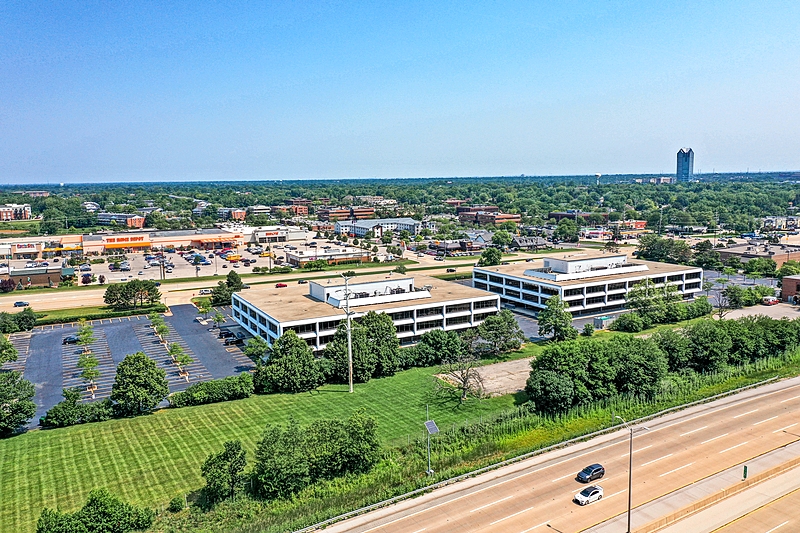Working Theory
By Naperville Magazine
August 2021 View more Community

With just over 16 years of experience in corporate real estate, Jason Shibata didn’t have the firsthand experience of navigating the significant office downturn that followed the terrorist attacks of 2001. But he is a student of history, which is why he points to that momentous period as something of a parallel in the office market to our nascent postpandemic state—albeit with several notable differences.
“Just like in the current market, there was a lot of doubt back then around the viability of the traditional office space, but safety measures changed and people eventually went back,” says Shibata, a partner at Downers Grove–based JBS Commercial Real Estate, the company he helped found in 2012. “However, we have not seen a prolonged situation like [the pandemic] that has forced people to actually change the way they do business with videoconferencing and virtual meetings and things like that.”
Those “forced efficiencies,” Shibata says, have uncovered a number of new realities within the corporate real estate market, as companies confront everything from scheduling flexibility to reconfigured spatial needs. After more than a year of adjusting to remote work, some organizations may feel that they haven’t missed a beat in terms of productivity and would welcome the cost savings of a smaller office footprint by moving forward with a largely remote or hybrid workforce.
As a result, the shutdown has led to a subdued office scene in the western suburbs, with a substantial number of vacancies and subleases on the market. However, as more segments of society have slowly returned to prepandemic norms and more companies have started to return to the physical office, Shibata sees an uptick in sentiment across the board, with leaders beginning to acknowledge what was lost over the past 18 months—regardless of how productivity held up.
“ ‘Culture’ is something of a corporate buzzword, but we do see more people missing the camaraderie and social bonding elements of the traditional office,” Shibata explains. “People want to see their team members again and get together for lunch. Maybe they didn’t realize how much those kinds of things meant until they were gone.”
That said, just like after 9/11, the office that many workers return to won’t look or feel exactly like the one they left in March 2020. Shibata says many companies, for example, are looking to reconfigure their spaces to allow for more efficient desk- and office-sharing among team members working on newly staggered schedules.
“Overall, most organizations are trying to err on the side of ensuring safety for their employees, while still remaining competitive and keeping those newfound efficiencies in place,” he says. “But now they also want the flexibility of space utilization for things moving forward in terms of lease sizes and lengths.”
Photo courtesy JBS Commercial Real Estate


